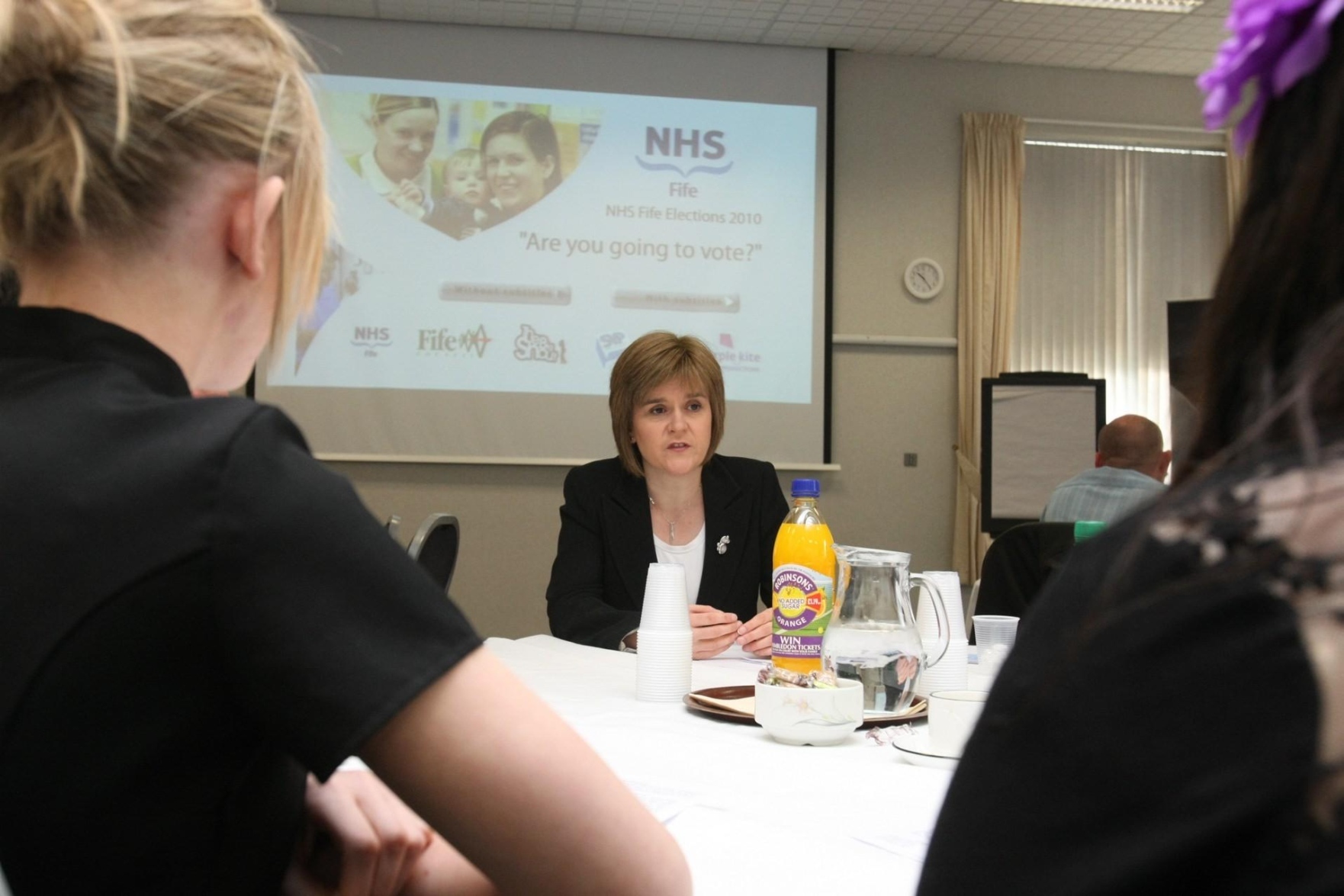Fife students were the first to hear how they can now directly help shape the future of health services in the region.
Scottish health secretary Nicola Sturgeon launched Scotland’s first direct health board elections while on a visit to Carnegie College in Dunfermline.
In another first, the voting age has been lowered from 18 to 16, giving younger teenagers their first taste of playing a full role in democratic elections.
NHS Fife, along with NHS Dumfries and Galloway, are running pilot schemes where members of the public will be able to stand for and cast their vote in health board elections.
In Fife, 12 board members will be elected who, along with the local authority’s representative, will form the majority.
“Proportional representation, using the single transferable vote, also means that every vote cast will truly count,” Ms Sturgeon said.
The pilots will be monitored over the next few years before a decision is taken on whether to expand elections across the country.
Ms Sturgeon said, “Why are we doing this? The answer is we live in a democracy.”
“In just a few weeks’ time, people in Fife and Dumfries and Galloway will for the first time be able to vote for members of their own communities to help run their local health service.”
The health secretary saw a short film made by members of the Scottish Youth Parliament, with help from NHS Fife, explaining the elections to young voters.
NHS Fife chairman, Professor Jim McGoldrick said, “It was excellent to have the opportunity of the visit from the cabinet secretary to show her some of the work we have been doing in Fife in partnership with the youth parliament.
“We have been working with the MYSPs to come up with ways of raising awareness among young people, especially 16 and 17-year-olds, of the forthcoming health board elections.”
Candidate nominations opened on Monday and ballot papers will be issued to every resident in Fife between May 8 and 13, with the closing date for votes on June 10.
